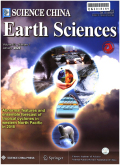- 钛学术文献服务平台 \
- 学术期刊 \
- 基础科学期刊 \
- 自然科学总论期刊 \
- 中国科学:地球科学(英文版)期刊 \
Recognition of trench basins in collisional orogens:Insights from the Yarlung Zangbo suture zone in southern Tibet
Recognition of trench basins in collisional orogens:Insights from the Yarlung Zangbo suture zone in southern Tibet
基本信息来源于合作网站,原文需代理用户跳转至来源网站获取
摘要:
Trench basin,as an important sedimentary repository in oceanic subduction zones,documents faithfully the evolution of paleodrainage and paleogeographic information.Because of the frequent intense deformation during and after deposition,the recognition of trench-basin strata in orogenic belts is quite challenging.Several trench-fill deposits have been identified from the Yarlung Zangbo suture in southern Tibet,which can be classified into two types based on major differences in formation timing and tectonic setting.The first type developed during subduction of the Neotethyan oceanic slab in the Cretaceous(e.g.,the Jiachala,Rongmawa,and Luogangcuo formations),and the second type developed during the initial stage of the India-Asia collision in the Palaeogene(e.g.,the Sangdanlin-Zheya formations).The former was originally deposited on the subducting oceanic crust and then accreted as tectonic slices into the subduction complex;the latter was deposited unconformably on the continental margin of the subducting Indian plate and then involved in the subduction complex during the continental collision.Typical lithologies of trench-basin fills include abyssal chert,siliceous shale,silty to sandy turbidites,debris flows deposits,and slump deposits without carbonate.Detritus feeding these basins were chiefly from the uplifted terrane in the upper plate.This paper summarizes the geological features of trench basins developed in southern Tibet and proposes criteria for recognizing trench-basins in collisional orogens.

推荐文章
Sequestration of carbon as carbonate in the critical zone: insights from the Himalayas and Tibetan P
Carbonate
Weathering
Isotope
Tectonic forcing
Major Miocene geological events in southern Tibet and eastern Asia induced by the subduction of the
Ridge subduction
Eastern Tibetan Plateau
Cenozoic mineralization
Seismic anomaly
Geological cycling of potassium and the K isotopic response: insights from loess and shales
K isotopes
Loess
Shale
K cycle
Sources of dissolved inorganic carbon in rivers from the Changbaishan area, an active volcanic zone
Carbon isotopes
Dissolved inorganic carbon
Rivers
Chemical weathering
Changbaishan
Active volcanic zone
内容分析
关键词云
关键词热度
相关文献总数
(/次)
(/年)
文献信息
| 篇名 | Recognition of trench basins in collisional orogens:Insights from the Yarlung Zangbo suture zone in southern Tibet | ||
| 来源期刊 | 中国科学:地球科学(英文版) | 学科 | |
| 关键词 | |||
| 年,卷(期) | 2020,(12) | 所属期刊栏目 | REVIEW |
| 研究方向 | 页码范围 | 2017-2028 | |
| 页数 | 12页 | 分类号 | |
| 字数 | 语种 | 英文 | |
| DOI | |||
五维指标
引文网络
引文网络
二级参考文献 (263)
共引文献 (44)
参考文献 (37)
节点文献
引证文献 (0)
同被引文献 (0)
二级引证文献 (0)
1940(1)
- 参考文献(0)
- 二级参考文献(1)
1964(2)
- 参考文献(0)
- 二级参考文献(2)
1965(1)
- 参考文献(0)
- 二级参考文献(1)
1966(1)
- 参考文献(0)
- 二级参考文献(1)
1967(2)
- 参考文献(0)
- 二级参考文献(2)
1968(1)
- 参考文献(0)
- 二级参考文献(1)
1970(1)
- 参考文献(0)
- 二级参考文献(1)
1973(1)
- 参考文献(0)
- 二级参考文献(1)
1975(1)
- 参考文献(0)
- 二级参考文献(1)
1976(2)
- 参考文献(0)
- 二级参考文献(2)
1977(1)
- 参考文献(0)
- 二级参考文献(1)
1978(2)
- 参考文献(0)
- 二级参考文献(2)
1979(2)
- 参考文献(0)
- 二级参考文献(2)
1980(3)
- 参考文献(0)
- 二级参考文献(3)
1982(4)
- 参考文献(0)
- 二级参考文献(4)
1983(4)
- 参考文献(0)
- 二级参考文献(4)
1984(5)
- 参考文献(0)
- 二级参考文献(5)
1985(1)
- 参考文献(0)
- 二级参考文献(1)
1986(1)
- 参考文献(0)
- 二级参考文献(1)
1987(5)
- 参考文献(1)
- 二级参考文献(4)
1988(4)
- 参考文献(1)
- 二级参考文献(3)
1989(4)
- 参考文献(0)
- 二级参考文献(4)
1990(2)
- 参考文献(1)
- 二级参考文献(1)
1991(1)
- 参考文献(1)
- 二级参考文献(0)
1992(5)
- 参考文献(0)
- 二级参考文献(5)
1993(1)
- 参考文献(0)
- 二级参考文献(1)
1994(6)
- 参考文献(0)
- 二级参考文献(6)
1995(4)
- 参考文献(0)
- 二级参考文献(4)
1996(7)
- 参考文献(1)
- 二级参考文献(6)
1997(2)
- 参考文献(0)
- 二级参考文献(2)
1998(9)
- 参考文献(2)
- 二级参考文献(7)
1999(2)
- 参考文献(0)
- 二级参考文献(2)
2000(8)
- 参考文献(1)
- 二级参考文献(7)
2001(6)
- 参考文献(0)
- 二级参考文献(6)
2002(11)
- 参考文献(0)
- 二级参考文献(11)
2003(4)
- 参考文献(1)
- 二级参考文献(3)
2004(8)
- 参考文献(1)
- 二级参考文献(7)
2005(14)
- 参考文献(2)
- 二级参考文献(12)
2006(6)
- 参考文献(1)
- 二级参考文献(5)
2007(5)
- 参考文献(0)
- 二级参考文献(5)
2008(12)
- 参考文献(1)
- 二级参考文献(11)
2009(9)
- 参考文献(0)
- 二级参考文献(9)
2010(11)
- 参考文献(1)
- 二级参考文献(10)
2011(13)
- 参考文献(1)
- 二级参考文献(12)
2012(13)
- 参考文献(4)
- 二级参考文献(9)
2013(14)
- 参考文献(0)
- 二级参考文献(14)
2014(20)
- 参考文献(3)
- 二级参考文献(17)
2015(23)
- 参考文献(3)
- 二级参考文献(20)
2016(18)
- 参考文献(3)
- 二级参考文献(15)
2017(12)
- 参考文献(4)
- 二级参考文献(8)
2018(2)
- 参考文献(1)
- 二级参考文献(1)
2019(3)
- 参考文献(3)
- 二级参考文献(0)
2020(0)
- 参考文献(0)
- 二级参考文献(0)
- 引证文献(0)
- 二级引证文献(0)
引文网络交叉学科
相关学者/机构
期刊影响力
中国科学:地球科学(英文版)
主办单位:
中国科学院
出版周期:
月刊
ISSN:
1674-7313
CN:
11-5843/P
开本:
16开
出版地:
北京东黄城根北街16号
邮发代号:
创刊时间:
1996
语种:
eng
出版文献量(篇)
3812
总下载数(次)
0
总被引数(次)
30396
期刊文献
相关文献
推荐文献
- 期刊分类
- 期刊(年)
- 期刊(期)
- 期刊推荐
力学
化学
地球物理学
地质学
基础科学综合
大学学报
天文学
天文学、地球科学
数学
气象学
海洋学
物理学
生物学
生物科学
自然地理学和测绘学
自然科学总论
自然科学理论与方法
资源科学
非线性科学与系统科学
中国科学:地球科学(英文版)2022
中国科学:地球科学(英文版)2021
中国科学:地球科学(英文版)2020
中国科学:地球科学(英文版)2019
中国科学:地球科学(英文版)2018
中国科学:地球科学(英文版)2017
中国科学:地球科学(英文版)2016
中国科学:地球科学(英文版)2015
中国科学:地球科学(英文版)2014
中国科学:地球科学(英文版)2013
中国科学:地球科学(英文版)2012
中国科学:地球科学(英文版)2011
中国科学:地球科学(英文版)2010
中国科学:地球科学(英文版)2009
中国科学:地球科学(英文版)2008
中国科学:地球科学(英文版)2007
中国科学:地球科学(英文版)2006
中国科学:地球科学(英文版)2005
中国科学:地球科学(英文版)2004
中国科学:地球科学(英文版)2003
中国科学:地球科学(英文版)2002
中国科学:地球科学(英文版)2001
中国科学:地球科学(英文版)2000
中国科学:地球科学(英文版)2020年第9期
中国科学:地球科学(英文版)2020年第8期
中国科学:地球科学(英文版)2020年第7期
中国科学:地球科学(英文版)2020年第6期
中国科学:地球科学(英文版)2020年第5期
中国科学:地球科学(英文版)2020年第4期
中国科学:地球科学(英文版)2020年第3期
中国科学:地球科学(英文版)2020年第2期
中国科学:地球科学(英文版)2020年第12期
中国科学:地球科学(英文版)2020年第11期
中国科学:地球科学(英文版)2020年第10期
中国科学:地球科学(英文版)2020年第1期

 免费查重
免费查重










